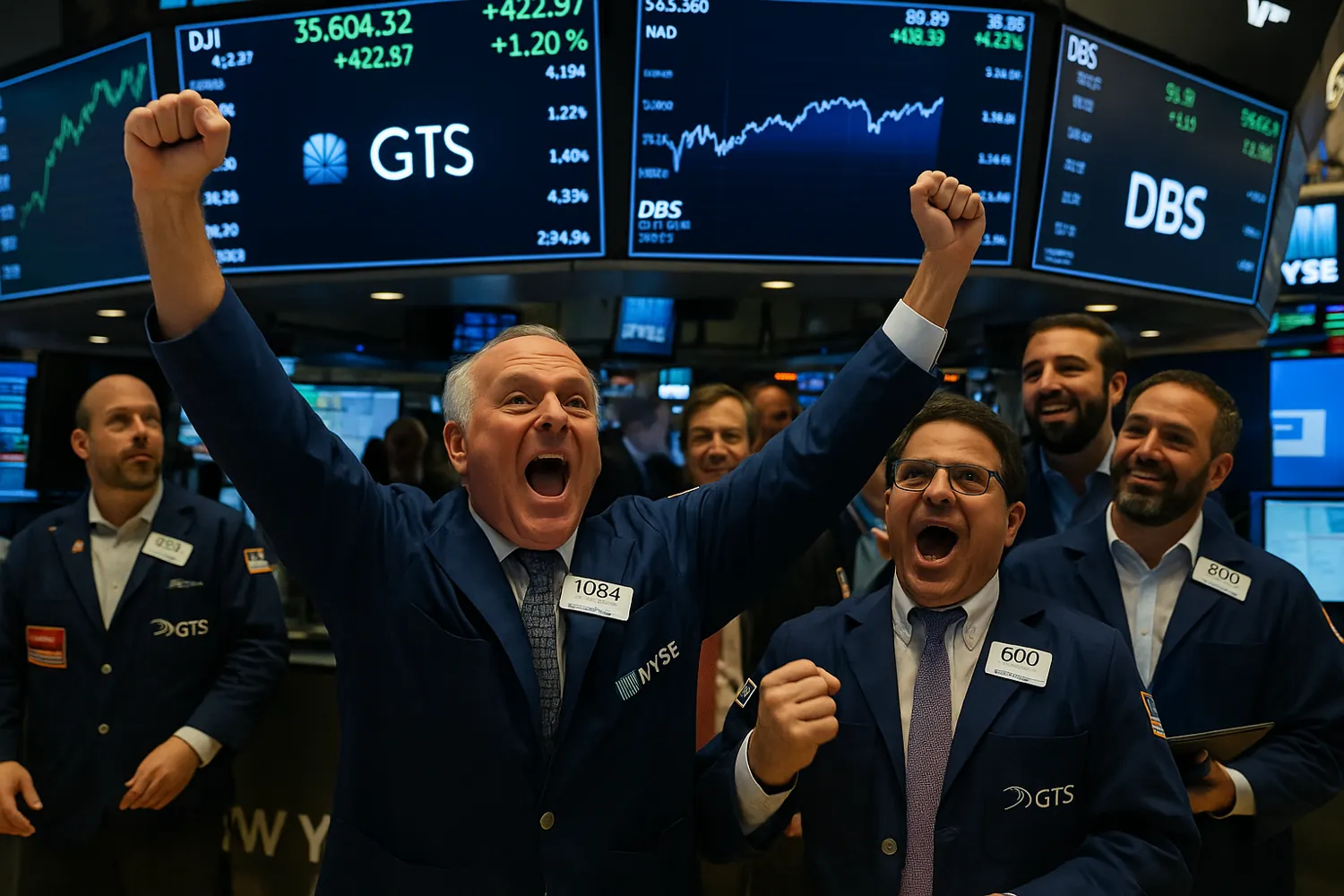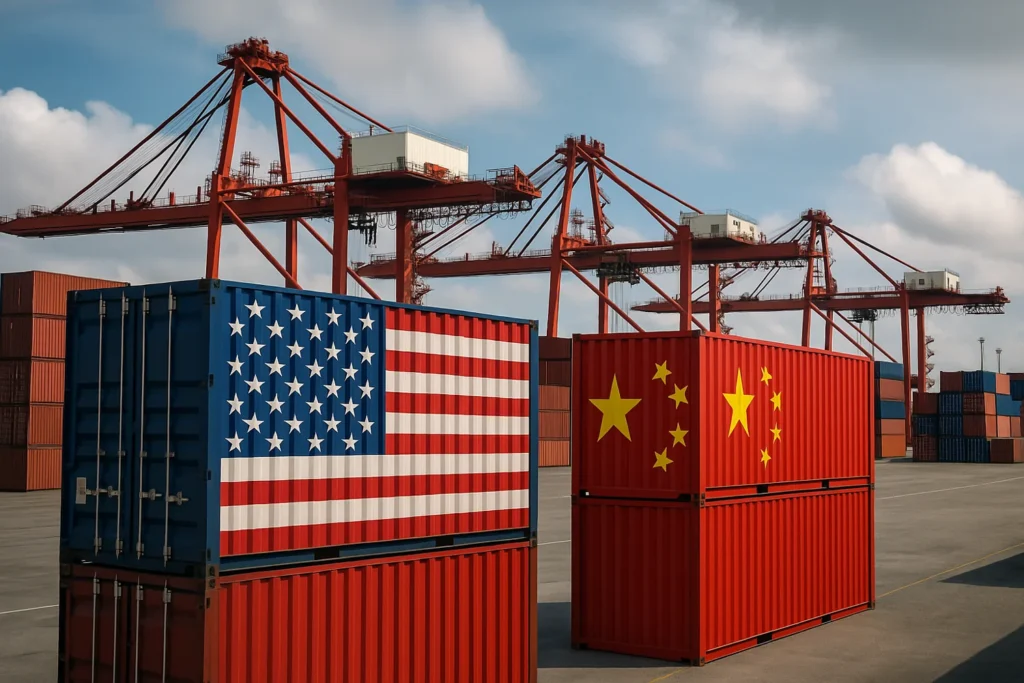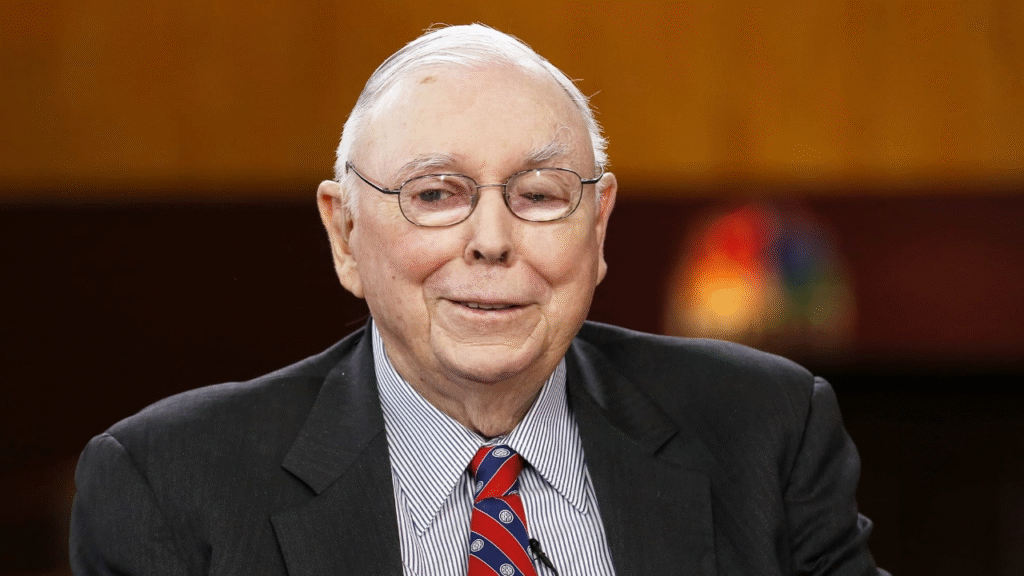The champagne corks were popping on Wall Street again. The Wall Street trade deal rally sent the S&P 500 surging 1.2%, as investors celebrated what they saw as a long-awaited sign of de-escalation in Trump’s global tariff crusade. The U.S.–Japan deal — capped at 15% tariffs — was sold as proof that the White House could balance aggression with pragmatism.
But beneath the applause and green tickers lies a warning no one on CNBC wants to talk about: the clock is ticking toward August 12, when tariffs on Chinese imports could soar by as much as 145%. The rally may be real — but so is the risk of collapse.
Context: Euphoria built on fragile foundations
Markets thrive on optimism, not facts. The Wall Street trade deal rally was triggered less by economic fundamentals and more by the illusion of stability. Investors, weary of two years of trade brinkmanship, latched onto the Japan pact as a turning point — a “template” for future negotiations with China and the EU.
The Dow Jones closed 480 points higher, Nasdaq gained 0.9%, and the S&P posted its best day in over a month. The yen weakened against the dollar, gold slipped 0.4%, and Treasury yields climbed as risk appetite returned.
To casual observers, it felt like 2017 again — markets dancing to Trump’s tweets. But analysts who remember 2018’s volatility see something else: a déjà vu rally driven by selective hope.
“The market wants to believe Trump has found discipline,” said Neil Mahoney, a senior strategist at JP Asset Partners. “But the history of his trade diplomacy is littered with sudden reversals.”
Behind the optimism, the fundamentals look less cheerful. Inflation remains sticky, manufacturing data is flat, and corporate profit margins are being squeezed by supply-chain costs. The rally, in short, is emotional — not structural.
Oppositional Argument: A market high on illusion
The mainstream narrative paints this surge as “rational optimism.” It’s not. It’s delusion — the same delusion that fueled every bubble from dot-com to crypto.
Wall Street’s short memory is its greatest liability. The Wall Street trade deal rally is being celebrated as proof of Trump’s economic genius, yet his tariff policy remains the biggest structural risk to U.S. growth. The Japan deal capped tariffs at 15%, but America’s average import duty now stands at 17% — seven times higher than two years ago.
Investors are gambling on a man whose idea of “negotiation” is public humiliation followed by policy whiplash. It’s not trade stability; it’s economic roulette.
Even veteran investors like Larry Fink of BlackRock have warned that “geopolitical volatility is now the biggest single risk factor in the global economy.” Yet the market keeps pretending geopolitics can be traded like a tech stock.
Trump’s unpredictability has become Wall Street’s addiction: volatility that feels like opportunity — until it doesn’t.
Analytical Breakdown: The rally, the risks, the ticking clock
Let’s be clear: the Japan deal was never about Japan. It was about sending a signal to Beijing. The White House hopes to pressure China into accepting a similar tariff framework before August 12 — the deadline for an automatic rate hike that could hit $240 billion worth of goods.
Investors read the Japan deal as a de-escalation. In reality, it’s a warning shot. If China doesn’t comply, tariffs could spike to 145% on critical sectors like EV batteries, rare earths, and semiconductors.
That’s not bullish — that’s apocalyptic.
If those hikes go into effect, consumer prices in the U.S. would skyrocket by late autumn, reigniting inflation and forcing the Federal Reserve to delay any rate cuts. That’s the nightmare scenario traders pretend doesn’t exist.
“Markets are mispricing political risk,” said Elise Dufour, an analyst at Société Générale. “They’ve priced in peace — but the policy environment is primed for confrontation.”
Even short-term indicators reveal unease. Gold may have dipped, but futures on VIX volatility rose 7% overnight. Bond markets, often smarter than equities, show investors quietly rotating into defensive positions.
The question isn’t whether Trump will escalate. It’s when.
Human Perspective: The rally the people don’t feel
For Wall Street, the trade deal rally means higher bonuses. For Main Street, it’s just another mirage.
Small business owners see nothing to celebrate. Importers in California’s logistics hubs report continued shipment delays due to tariff paperwork. Farmers still struggle with storage costs after export contracts evaporated during earlier trade wars.
“I can’t hedge hope,” said Mike Sullivan, a Kansas grain exporter. “Every new deal is supposed to help us. But every time, prices drop or deliveries stall.”
Meanwhile, the average American consumer faces rising costs on electronics, cars, and groceries. The rally enriches shareholders but drains paychecks.
Tokyo-based suppliers echo the same frustration. “We’ve spent more on compliance in six months than we used to spend in two years,” said Kazuo Ito, CFO of a mid-tier Japanese parts manufacturer. “Washington may celebrate. We’re bleeding.”
The gap between market optimism and real-world economics is widening — dangerously so.
Counterarguments
Defenders of Trump’s trade strategy insist that the Japan pact proves “dealmaking works.” They argue that tariffs force concessions and strengthen the U.S. position.
But this narrative ignores the cost of uncertainty. Every new tariff threat freezes investment, complicates logistics, and discourages hiring. U.S. capital spending fell 3.4% in Q2, the sharpest drop since 2020.
Even Republican lawmakers quietly admit the risks. Senator Pat Toomey warned last week that “a tariff truce with one ally doesn’t offset instability with others.”
So yes, the market rallies — but only until the next headline drops.
Insider Perspective: Traders playing musical chairs
On Wall Street trading floors, the mood is upbeat but cautious. “Everyone’s long today,” one trader at Goldman Sachs quipped, “but no one’s stupid enough to hold over the weekend.”
That sums up the moment. The rally isn’t conviction; it’s choreography. Algorithmic funds amplify any good news, retail investors follow the surge, and institutions quietly unload positions before reality hits.
Bloomberg analysts estimate that 62% of the day’s gains came from automated buy triggers linked to tariff-related keywords in news headlines. In other words, AI-powered trading bots — not human analysis — drove much of the optimism.
It’s a feedback loop of delusion: a machine buys on hope, another machine follows, and humans interpret it as confidence.
Global View: Japan calms, China waits, Europe frowns
Outside the U.S., the reaction is mixed. Tokyo’s Nikkei index rose 1.4%, buoyed by the bilateral deal, but Chinese state media called it “a temporary distraction.” Beijing knows Washington’s goodwill expires the moment polls shift.
In Europe, policymakers are frustrated. “America is negotiating bilaterally to impose multilateral effects,” said EU Trade Commissioner Annalena Huber. “That’s not diplomacy — that’s economic colonialism.”
Emerging markets, too, remain vulnerable. The stronger dollar is pushing capital outflows from Southeast Asia, while Latin American exporters brace for knock-on effects from potential Chinese retaliation.
The global economy may have avoided a shock this week, but the tremors haven’t stopped.
Analytical Deep Dive: The inflation trap
Every economist in New York knows what happens if the China tariffs kick in: inflation reignites.
The U.S. consumer price index, already at 3.6%, would spike to nearly 5% by year-end, according to Morgan Stanley simulations. The Fed, which has hinted at rate cuts, would be forced to reverse course.
That means higher mortgage rates, costlier credit cards, and falling tech valuations — the same “hard landing” investors swore was off the table just weeks ago.
The cruel irony? The Wall Street trade deal rally makes this worse. Rising equities give the illusion of financial strength, which may embolden the White House to press harder against China. The market is cheering the very behavior that could crush it.
Historical Parallel: The calm before the 2018 storm
In early 2018, markets rallied after Trump’s first “phase one” deal with China. Three months later, he tore it up with a tweet. Stocks plunged, supply chains broke, and recession alarms blared.
The same ingredients are back: misplaced optimism, reckless tariffs, and faith in a man who negotiates like a hostage-taker.
History rarely repeats perfectly — but it often rhymes.
Human Cost: Beyond the numbers
In America’s industrial heartlands, optimism doesn’t pay the bills. Manufacturers in Ohio and Pennsylvania are cutting hours due to export uncertainty. Dockworkers in Long Beach report “quiet days” again — fewer containers, fewer jobs.
Economic nationalism may sound heroic in speeches, but it leaves ordinary people footing the bill.
As one worker put it: “We’re the collateral damage of politics pretending to be economics.”
Conclusion: A rally against reason
The Wall Street trade deal rally is a masterpiece of collective denial — a celebration built on the assumption that Trump will suddenly act predictably.
Markets may love the headlines, but they ignore the patterns. Every truce ends in escalation. Every promise dissolves into tariffs. Every rally ends in a reckoning.
Unless the White House walks back its China deadline or crafts a genuine multilateral solution, this week’s euphoria will age poorly — another blip in an era defined by impulsive economics.
The irony of Trump’s trade victories is that they never last long enough to matter. The markets rise, the world watches, and the countdown to the next shock begins.
By August 12, the party could be over.
External Links
70 views






